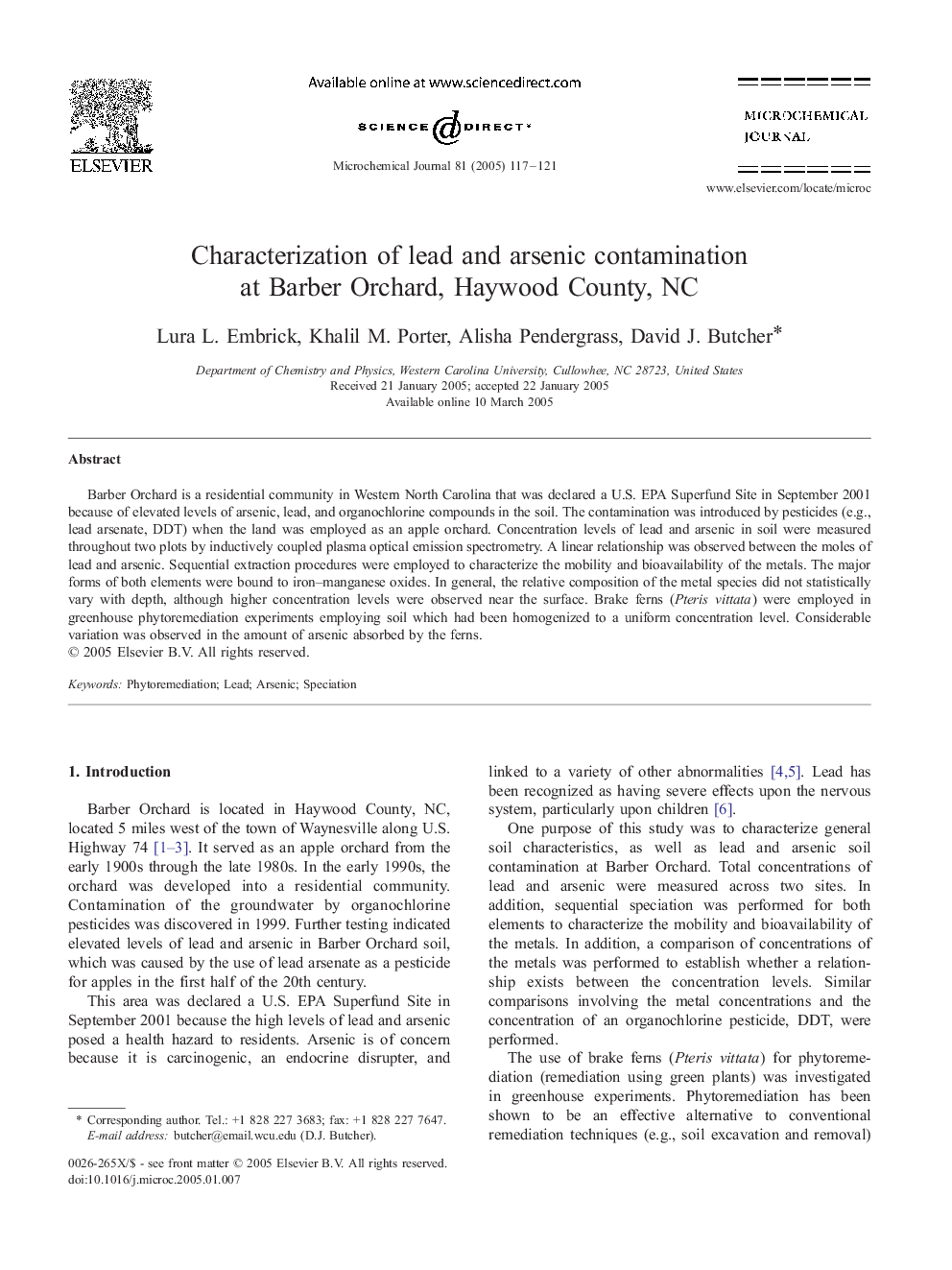| Article ID | Journal | Published Year | Pages | File Type |
|---|---|---|---|---|
| 10557227 | Microchemical Journal | 2005 | 5 Pages |
Abstract
Barber Orchard is a residential community in Western North Carolina that was declared a U.S. EPA Superfund Site in September 2001 because of elevated levels of arsenic, lead, and organochlorine compounds in the soil. The contamination was introduced by pesticides (e.g., lead arsenate, DDT) when the land was employed as an apple orchard. Concentration levels of lead and arsenic in soil were measured throughout two plots by inductively coupled plasma optical emission spectrometry. A linear relationship was observed between the moles of lead and arsenic. Sequential extraction procedures were employed to characterize the mobility and bioavailability of the metals. The major forms of both elements were bound to iron-manganese oxides. In general, the relative composition of the metal species did not statistically vary with depth, although higher concentration levels were observed near the surface. Brake ferns (Pteris vittata) were employed in greenhouse phytoremediation experiments employing soil which had been homogenized to a uniform concentration level. Considerable variation was observed in the amount of arsenic absorbed by the ferns.
Related Topics
Physical Sciences and Engineering
Chemistry
Analytical Chemistry
Authors
Lura L. Embrick, Khalil M. Porter, Alisha Pendergrass, David J. Butcher,
